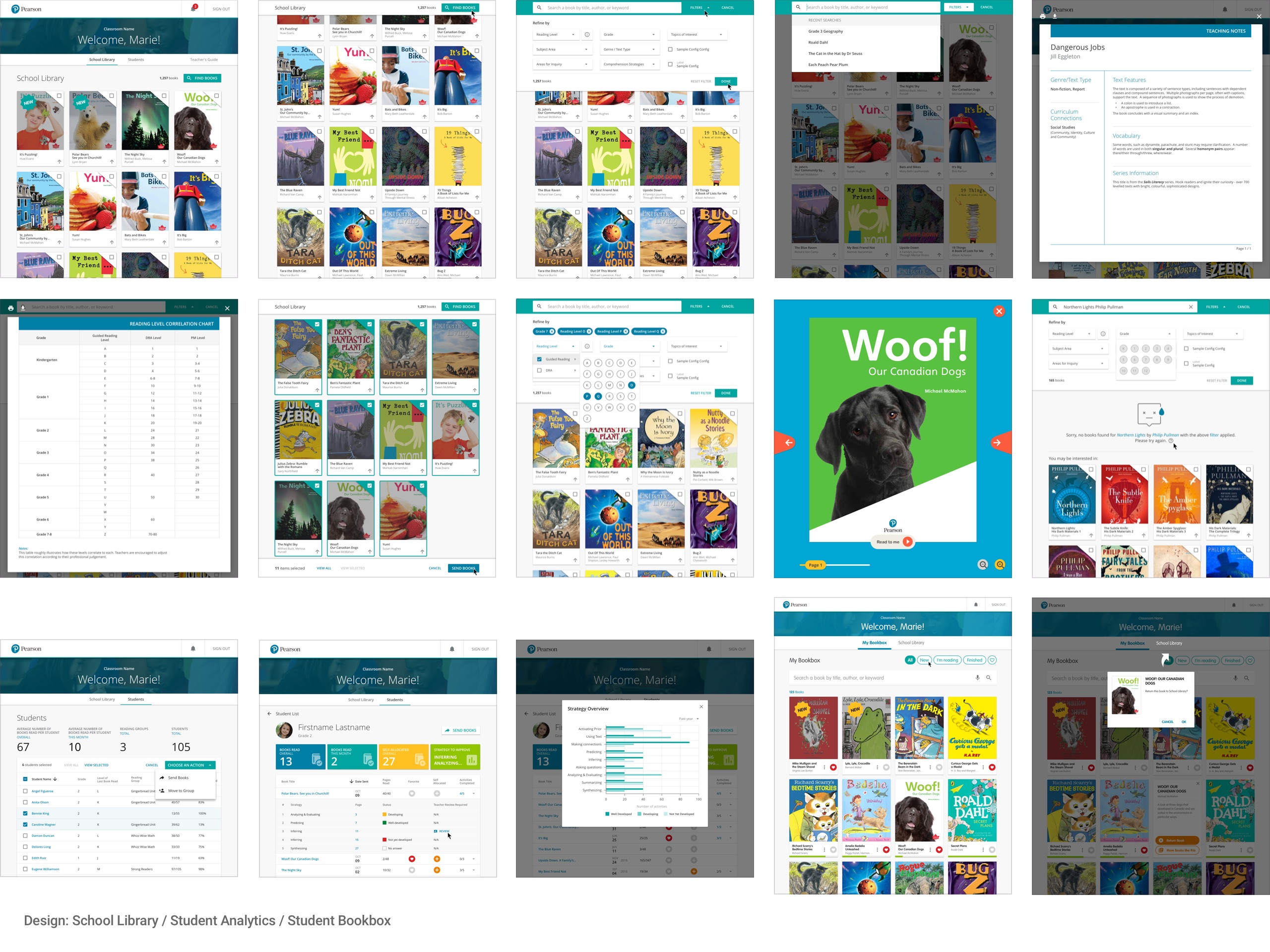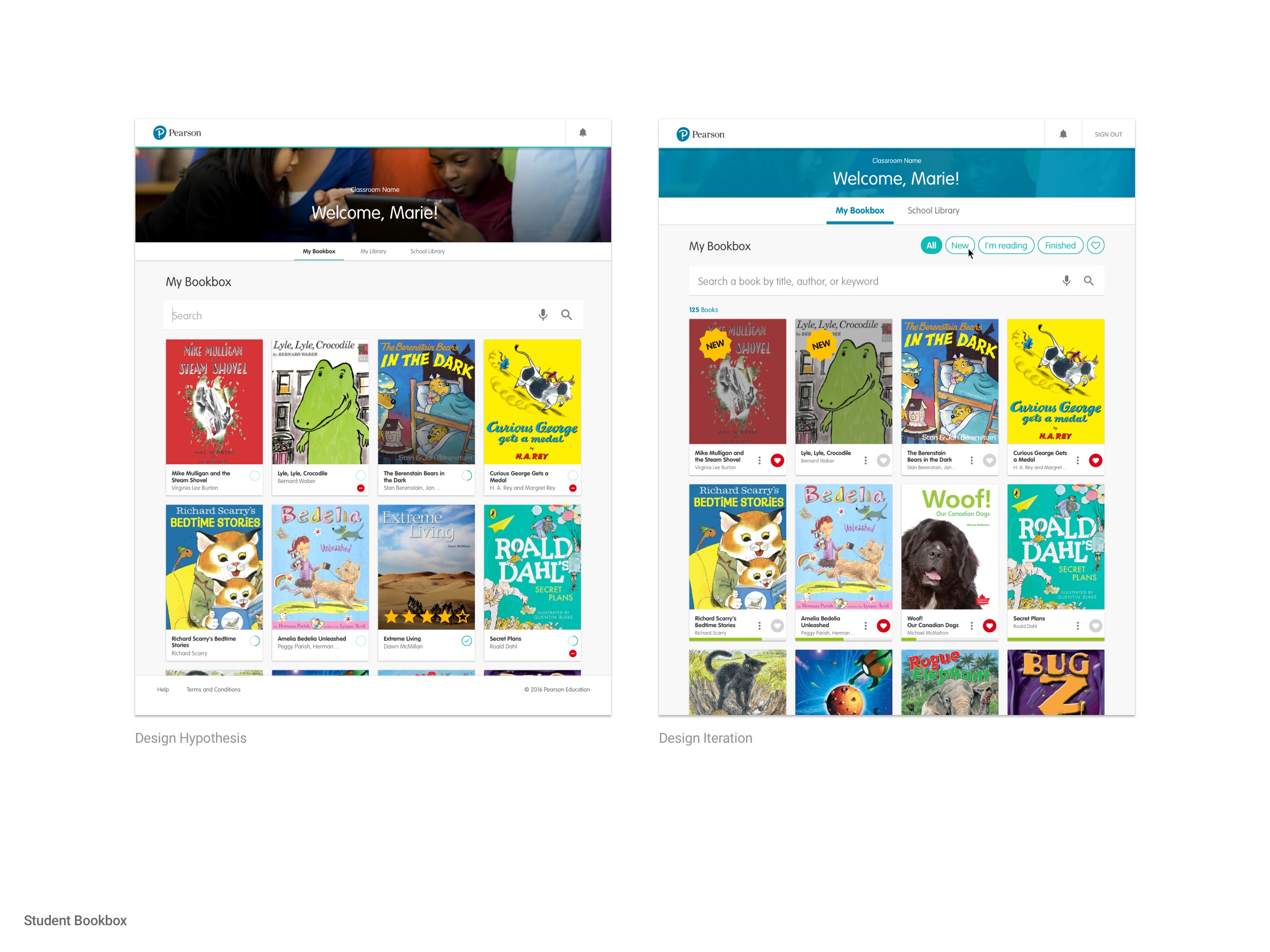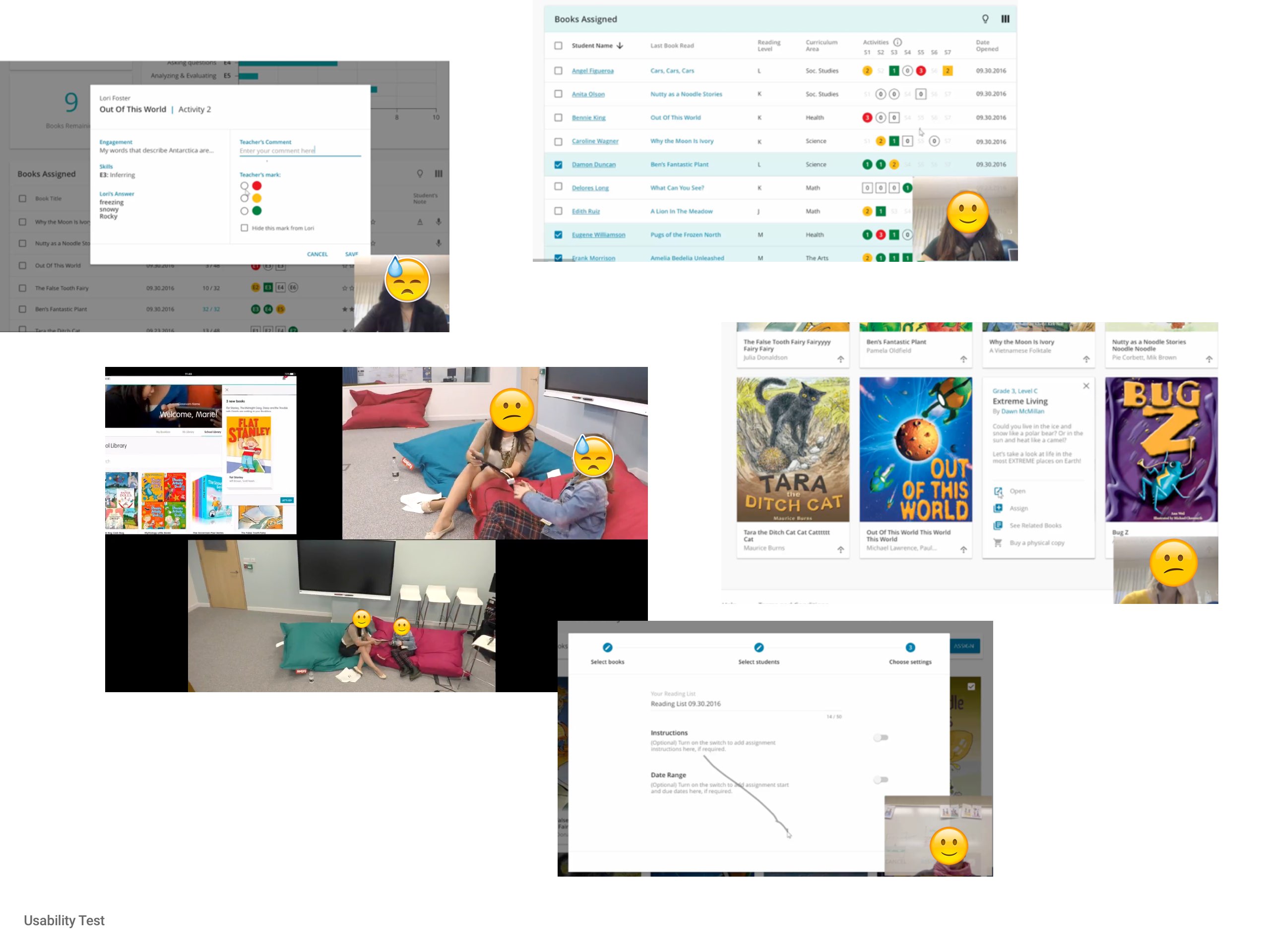
A new digital literacy platform for Canadian K-6 schools.
Client: Pearson
Design & Usability Testing
Designing a digital library for young learners.
Overview
Teachers in Canadian primary school wanted a digital bookshelf to both encourage an interest of reading with their primary-age digital natives, and to track their reading progress through assigned books with a range of reading proficiency/engagement scales.
After the initial ideation and design hypothesis, we conducted a series of semi-structured interviews with 24 teachers and 6 young learners in 3 Canadian provinces. The goal was to understand further the needs and problems of literacy tuition, validate the assumptions and hypotheses arising from the initial design, and identify potential variances in requirements between different Canadian provinces.
In the second part of the interview, teachers and young learners explored some key anticipated use cases using a prototype of a digital library we build via InVision, and provided feedback on their experience. Buy and large, the design is highly usable, archiving a mean score of 68 on the System Usability Scale (SUS). Having 6 as the margin of error in terms of Confident Interval, we can be 95% certain that the score in the general population represented by participants will be between 62 and 74.
During the testing, several major issues with user experience and usability were identified, in addition to a range of minor issues with iconography, accessibility and terminology. Hence a round of design iteration were made to address the use cases. E.g.
-
Information seeking in digital content collections
Most teachers expressed a preference for using a combination of filters over search when locating new content since switching between search and filter caused significant friction. We then integrated both search field and filters into a single combined filter panel, to support all information-seeking behaviours within a single view. -
Learner analytics for student group and individuals
Detailed students information was overwhelming for most teachers when presented with groups of student. Hence we simplified data set at the group level, depicting broader and higher leaner characteristics as garthered from feedback, e.g. grade, reading level, total number of actives completed… before drilling down to the comprehensive activity performance data. -
Book rating system
How to use the rating feature was intuitively understood by the majority of students. However, some students exhibited a strong aversion to the “arbitrary appraisal” nature of the star rating system - whilst wanting to mark books they “liked”. So we considered replacing the star rating mechanism with a simple heart icon, allowing students to highlight books they love, without the pressure of a more critical appraisal.
Build
A capabilities-led approach was then established in liaison with Product Management and Technology, leveraging existing GPO capabilities to address the uses cases described by the Canadian team and surfaced through our formative research described above. This resulted in significant extension of these capabilities, notably in the provision of in-depth learning analytics for literacy. Due to strict requirements from the Canadian government, a full accessibility audit was also carried out during the design iteration in order for the Primary Library to be certified as WCAG AA compliant.
Measure & Impact
The Pearson Canada team have shared a report from some of their initial pilot phases with the Primary Library; some of the very positive quantitative and qualitative responses to the product included:
- 78% of respondents found the Pearson product very or extremely appealing.
- “Simplicity in use and user friendliness” (teacher testimonial)
- "has much more options of books to choose from and seems to have a responsive interface and be easier to use” (teacher testimonial)




